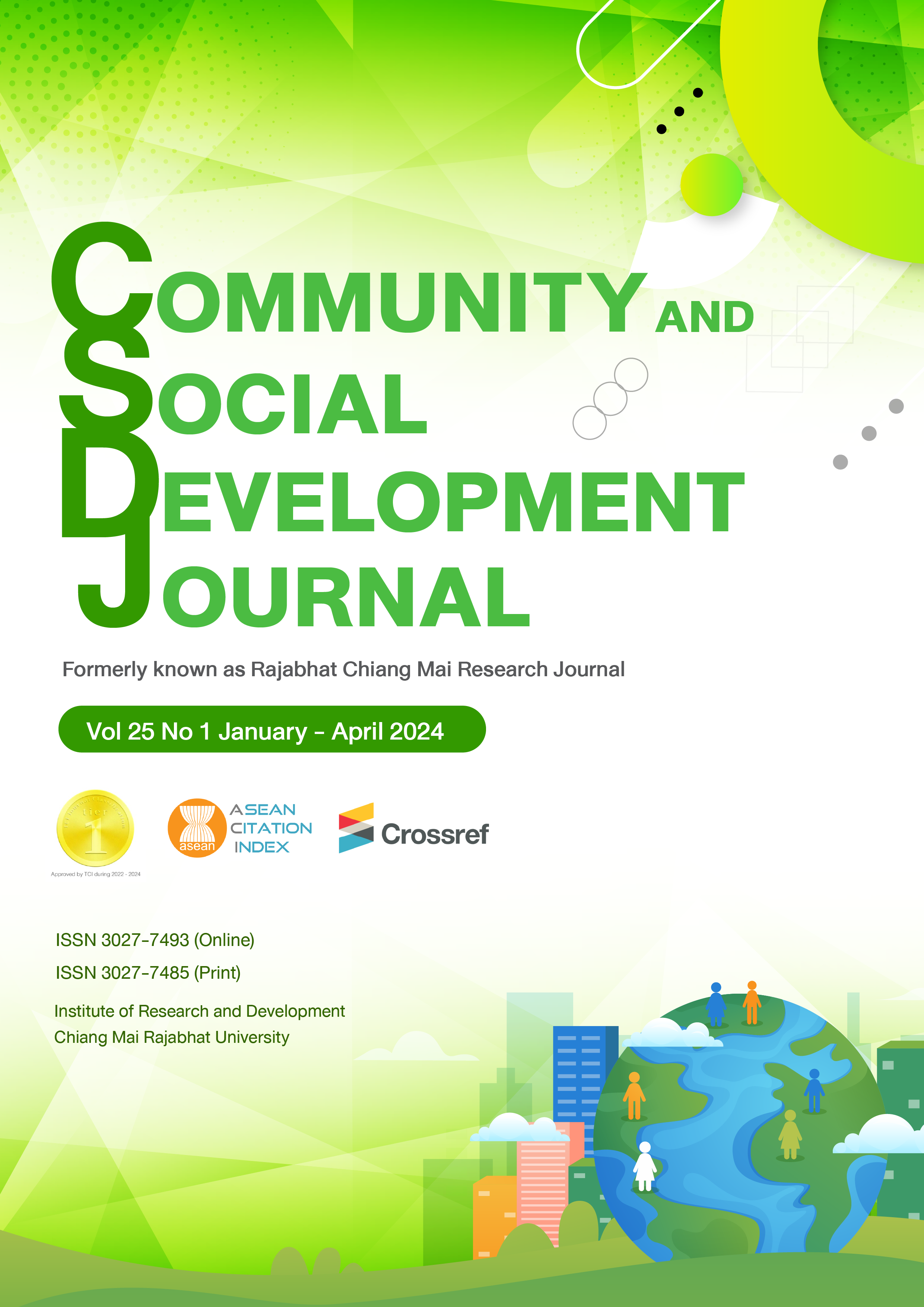CLIL or EMI? A Case Study of Non-English in-Service Teachers Teaching Reflection in an International School
DOI:
https://doi.org/10.57260/rcmrj.2024.265323Keywords:
Content integrated language learning, English medium instruction, Teacher training, International school, Non-English teachersAbstract
Content Language Integrated Learning (CLIL) and English Medium Instruction (EMI) have been adopted in many institutions ever since the use of English is required for businesses, education, and job opportunities. This results in the establishment and development of international schools countrywide in EFL countries especially in Thailand as an alternative educational route for those wanting to experience an international learning environment and/or simply to enhance English language ability. The aim of this case study is to investigate the context that non-English in-service teachers reflect when teaching in an international school context. Nine participants who are currently teaching in a large international school in Bangkok were recruited for a semi-structured interview on their instructional strategies for non-English subjects. Thematic analysis was used as an approach to thematize the transcript in the pedagogical reflection of CLIL and EMI. Although an international school is expected to fully adopt the EMI practice, the finding shows that most teachers’ teaching practice reflects the CLIL approach. The influence of choosing CLIL as a major approach was due to concerns in readiness relating to essential vocabulary necessary for learning content subjects and students’ native language background. Although a clear boundary of CLIL and EMI could not be clearly defined in current literature, recommendations on future research and teacher’s training are discussed.
Downloads
References
Aguilar, M. (2017). Engineering lecturers’ views on CLIL and EMI. International Journal of Bilingual Education and Bilingualism, 20(6), 722-735. DOI:10.1080/13670050.2015.1073664
Apas, D. D., & Ventayen, R. J. M. (2019). Gamification in the teaching process in international schools in bangkok, thailand. International Journal of Scientific & Technology Research, 8(12). Retrieved from https://ssrn.com/abstract=3491719
Ball, P., & Kelly, K. (2016). Putting CLIL into practice: Oxford handbooks for language teachers. Oxford University Press.
Coyle, D., Hood, P., & Marsh, D. (2010). CLIL: Content and Language Integrated Learning. Cambridge University Press.
Dearden, J. (2018). The changing roles of EMI academics and English language specialists. Key issues in English for specific purposes in higher education. Springer.
Doiz, A., Lasagabaster, D., & Sierra, J. M. (2013). The integration of content and language as a driving force in higher education in Europe. International Journal of Multilingualism, 10(3), 237-254. DOI:10.1057/9781137000873_5
Graham, K. M., Choi, Y., Davoodi, A., Razmeh, S., & Dixon, L. Q. (2018). Language and Content Outcomes of CLIL and EMI: A Systematic Review. Latin American Journal of Content and Language Integrated Learning, 11(1), 19-37. DOI: 10.5294/laclil.v11i1.9268
Hayden, M. (2011). Transnational spaces of education: The growth of the international school sector. Globalisation, societies and education, 9(2), 211-224. DOI:10.1080/14767724.2011.577203
Hillyard, S. (2011). First steps in CLIL: Training the teachers. Latin American Journal of Content & Language Integrated Learning, 4(2), 1-12. DOI: 10.5294/laclil.2011.4.2.1
Inbar-Lourie, O., & Donitsa-Schmidt, S. (2020). EMI Lecturers in international universities: is a native/non-native English-speaking background relevant?. International Journal of Bilingual Education and Bilingualism, 23(3), 301-313. DOI:10.1080/13670050.2019.1652558
Kachru, B. B. (1990). World Englishes and applied linguistics. World Englishes, 9(1), 3-20. DOI: 10.1111/j.1467-971X.1990.tb00683.x
Lasagabaster, D., & Doiz, A. (2016). CLIL and EMI: The same coin or two different currencies?. International Journal of Bilingual Education and Bilingualism, 19(2), 162-175.
Lasagabaster, D., & Doiz, A. (2017). CLIL and EMI: High-flying or grounded in reality? System, 66, 1-2.
Marsh, D., & Wolff, D. (2007). Diverse contexts – Converging goals: CLIL in Hong Kong and Europe. International Journal of Bilingual Education and Bilingualism, 10(3), 223-245.
McDougald, J. S. (2016). CLIL approaches in education: Opportunities, challenges, or threats?. Latin American Journal of Content & Language Integrated Learning, 9(2). DOI:10.5294/laclil.2016.9.2.1
Naite, I. (2021). Impact of parental involvement on children’s academic performance at Crescent International School, Bangkok, Thailand. In IOP Conference Series: Earth and Environmental Science. IOP Publishing.
Rubin, H. J., & Rubin, I. S. (2011). Qualitative interviewing: The art of hearing data. (3rd ed.). SAGE Publications.
Ruiz-Cecilia, R., Medina-Sánchez, L., & Rodríguez-García, A. M. (2023). Teaching and Learning of Mathematics through CLIL, CBI, or EMI—A Systematic Literature Review. Mathematics, 11(6), 1347. DOI: 10.3390/math11061347
Tang, K. N. (2020). Challenges and Importance of Teaching English as a Medium of Instruction in Thailand International College. Journal of English as an International Language, 15(2), 97-118. Retrieved from http://files.eric.ed.gov/fulltext/EJ1282858.pdf
Zhang, Y., & Jocuns, A. (2022). From Natural Translanguaging to Planned Translanguaging: Developing Classroom Translanguaging as Pedagogy in a Private University in China, Arab World English Journal, 13(1), 313-329. DOI: 10.24093/awej/vol13no1.20
Downloads
Published
How to Cite
Issue
Section
License
Copyright (c) 2024 Rajabhat Chiang Mai Research Journal

This work is licensed under a Creative Commons Attribution-NonCommercial-NoDerivatives 4.0 International License.
1. Articles, information, content, images, etc published in the “Community and Social Development Journal” are copyrighted by the Community and Social Development Journal, Chiang Mai Rajabhat University. In order to properly distribute the articles through print and electronic media, the authors still hold the copyright for the published articles under the Creative Commons Attribution (CC BY) license, which allows the re-distribution of the articles in other sources. References must be made to the articles in the journal. The authors are responsible for requesting permission to reproduce copyrighted content from other sources.
2. The content of the articles appearing in the journal is the direct responsibility of the article authors. The editorial board of the journal does not necessarily agree with or share any responsibility.














